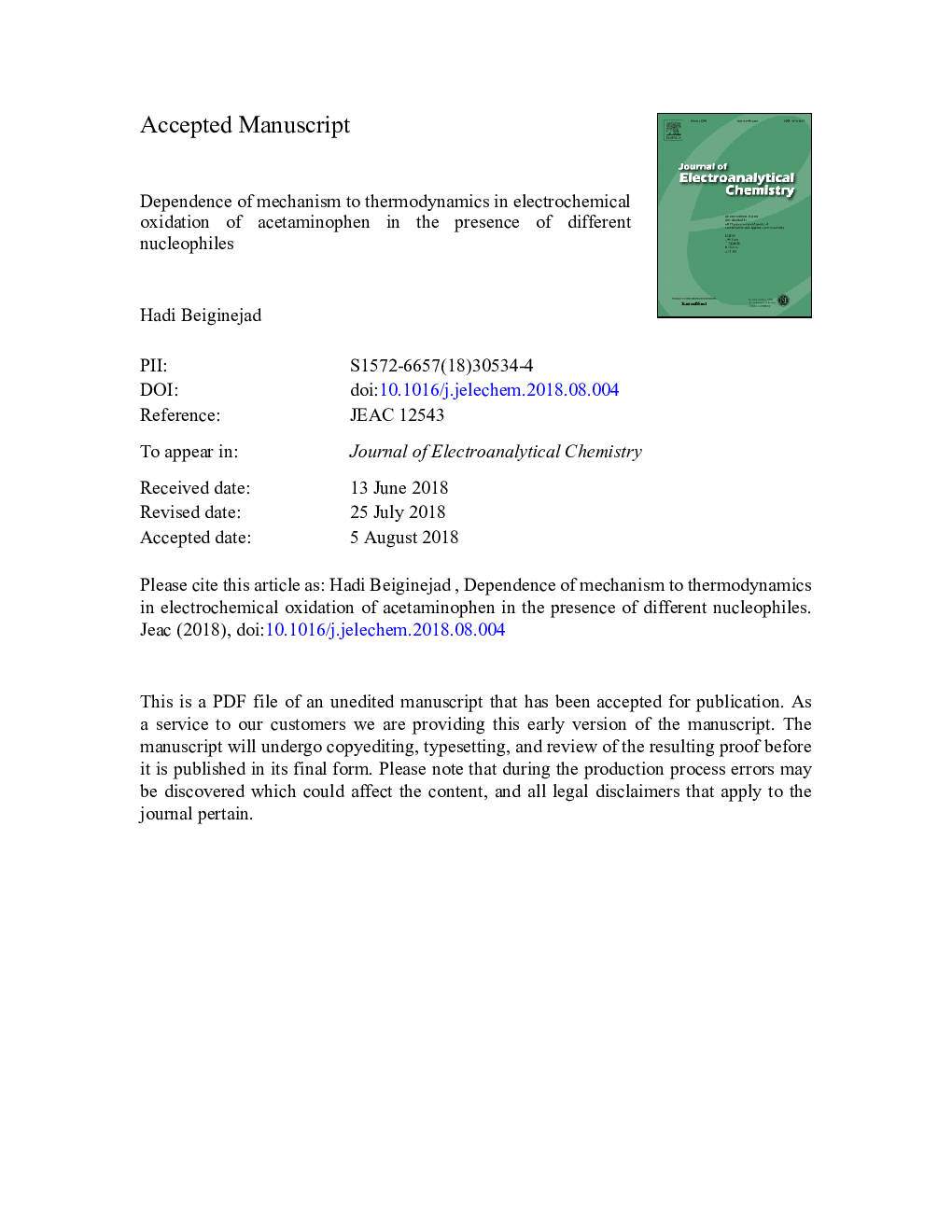| Article ID | Journal | Published Year | Pages | File Type |
|---|---|---|---|---|
| 9951805 | Journal of Electroanalytical Chemistry | 2018 | 29 Pages |
Abstract
In this work, electrochemical oxidations of three aminophenol species (4-aminophenol, N-methyl 4-aminophenol and acetaminophen) have been investigated both computationally and experimentally. The computational data were obtained using DFT (B3LYP) level of theory and 6-311G(d,p) basis set. Also, cyclic voltammetry and controlled potential coulometry were used to obtain the experimental results. The results indicate that the electrochemical oxidation potential of studied species (EpA) is dependence on âGtot, and it increases upon increasing âGtot. The âGtot of studied species, calculated by the use of a general thermodynamic cycle, were used to mechanistic study of the electrochemical oxidation of acetaminophen in the presence of various nucleophiles. The results show that mechanisms of the electrochemical oxidation of acetaminophen in the presence of different nucleophiles are not the same, and the mechanisms are dependent on the âGtot species which are produced during electrolysis. It was found that the mechanism of the electrochemical oxidation of acetaminophen in the presence of 2-thiobarbituric acid in phosphate buffer solution is ECEC and in a buffer solution/acetonitrile mixture is ECECE. Finally, the calculated results were used to predict the electrochemical oxidation mechanisms of acetaminophen in the presence of 4-mercaptocoumarin, pyridine and cyanide ion as nucleophiles.
Related Topics
Physical Sciences and Engineering
Chemical Engineering
Chemical Engineering (General)
Authors
Hadi Beiginejad,
